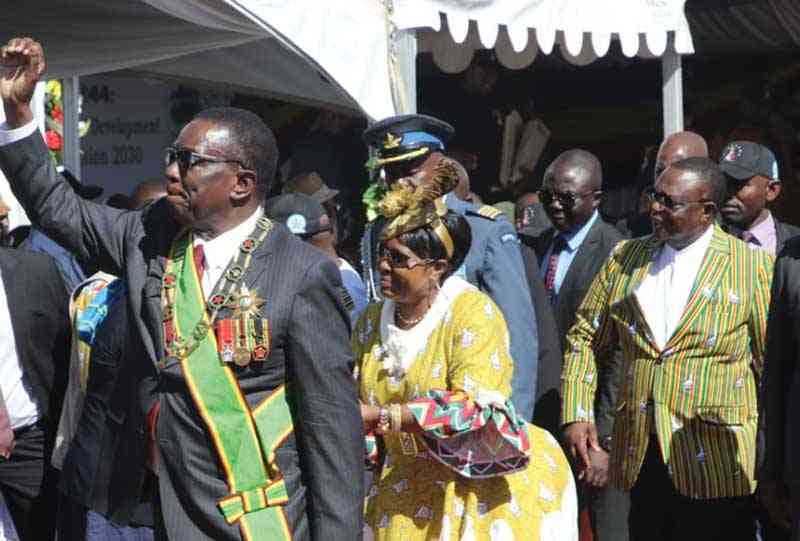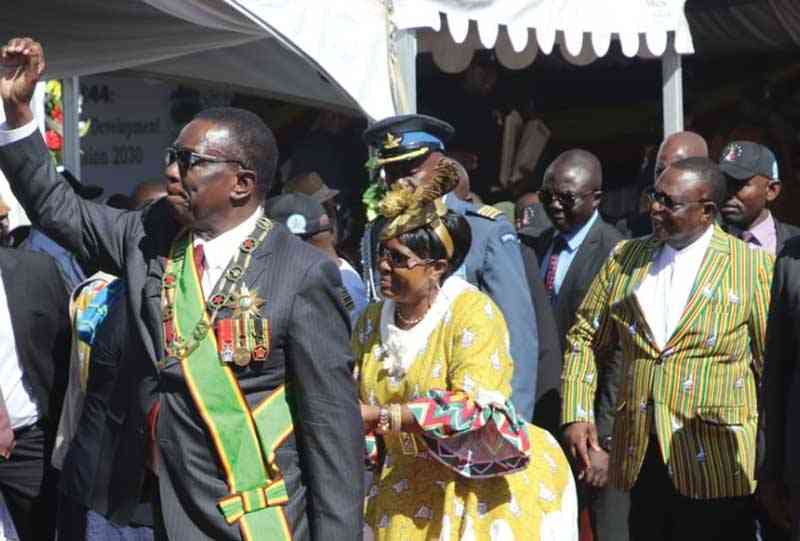
Environmental stickers play a major role in putting the climate message across, simply and in brief. Stickers with climate change messages, logos, and images help people visualise and internalise the brief messages, colour or particular images permanently in their minds. Environment stickers are within the group of “sustainable miles” designed for climate change advocacy and campaigns.
guest column; PETER MAKWANYA
Environmental stickers can also be viewed as part of a wide range of “soft-measures” to initiate climate protection strategies. It has also been realised that relying on only rigorous and aggressive measures may not offer the desired results and solutions. Therefore, considering the role of soft-measures in communicating and educating the public on the climate question becomes a non-confrontational measure, a silent, but very effective means of engaging and empowering the public with long-lasting and sustainable climate protection measures.
Environmental stickers are soft and flexible interventions that can be found on a wide range of regalia. Stickers are easy to carry, as well as strategically-positioned, as they can be placed on school uniforms, bags, public places — like supermarkets, public toilets, public transport, hospitals, cars, clinics or schools.
As part of sustainable miles, climate change stickers are designed to reach every sector of society in order to inform people on the need to combat climate change and protect the environment. Sustainable mile labels are designed to enhance behavioural changes and contribute to environmental stewardship and sustainability. Since every person has a duty to protect the environment, these eco-labels are quite persuasive and enforcing in their own right. Once an individual reads the eco-labels they are unconsciously reminded, as well as intrinsically motivated to live or perform, as the message would have indicated.
Environmental stickers are promotional labels designed to fill in knowledge gaps emanating from formal trainings, newspaper, radio or television representations. They are designed to overcome information barriers and challenges that come about by interacting with the complex and technical nature of climate science communication. They do not target a specific group of people, but everybody, who cares about the environment.
Sustainable miles and soft-measures, are part of community-based efforts to promote climate change protection and enhance literacy. They provide continuous communication and networking efforts for diverse communities of climate change stakeholders. Sustainable miles contribute to the development of a shared agenda including shared systems of measures, which resonate well with the public and stakeholders’ desires and expectations.
As forms of sustainable miles, these stickers or eco-labels bridge the information gap between providers of environmental services and their immediate stakeholders. It is also important for the targeted climate change audience to understand why most of these stickers are designed in green instead of yellow or red. Colour, in this view, plays a significant communication role in environmental sustainability.
- Chamisa under fire over US$120K donation
- Mavhunga puts DeMbare into Chibuku quarterfinals
- Pension funds bet on Cabora Bassa oilfields
- Councils defy govt fire tender directive
Keep Reading
Environmental stickers are part of engaging information disseminators, which are critical in empowering the public and stakeholders on the need for continuous climate change engagement and campaigns. They are voluntary, peaceful, and free from insinuations and nagging ideological stand points. They also add on to how people ought to treat the environment and what personal actions they can sustainably participate in.
Stickers play an active role in highlighting environmental responsibility in terms of the current environmental practices that are aimed at conserving nature and addressing those that are damaging to the environment. They are designed with user-friendly language that is constructed towards encouraging people to have a reciprocal relationship with nature. The language on stickers is sufficiently empowering, educative and representative.
Although people are encouraged to use the environment for their sustainable needs, they are also discouraged from living as eco-freaks, plundering the environment and destroying everything in it. Human beings have a duty to be guardians of nature, as according to the scriptures. Therefore, our actions need to be modelled around the behaviours and attitudes that enhance ecological balance.
Sustainable miles and soft-measures are not designed on selfish lines, as they offer collective approaches and do not leave anyone behind. These sustainable measures are cross-cutting and inclusive in nature and do not only appeal to four sensory properties of human beings, but they also effectively appeal to interdisciplinary and transdisciplinary dichotomies. Sustainable miles on their own and in isolation, cannot achieve the desired results in the absence of stakeholders’ support and participation. They should be collective and inclusive and also recognise the role of the poor, the vulnerable, women and children.
When properly nurtured, sustainable miles, help strengthen the power of grassroot networks in developing a shared climate change agenda. Climate literacy is also complementary and comprehensive in the sense that, a climate literate person is in a position to make informed and responsible decisions with regard to the behavioural practices that may harm the environment. By so doing, sustainable miles assist in the development of shared green and ecological discourses and communities of practices that recognise the value of nature. This is important in the sense that, members of a community will be tolerant and begin to understand each other’s efforts in moving towards the facilitation of the development of a common agenda for a collective impact.
Sustainable miles are not only important in engaging scientists and educators, but also encourage the interactive participation of some wider range of other professionals, the ordinary and the public at large. Finally, sustainable miles will leave a legacy for the next generation to understand, address and solve pressing local climate change impacts and challenges.
Peter Makwanya is a climate change communicator. He writes in his own capacity and can be contacted on: [email protected]











